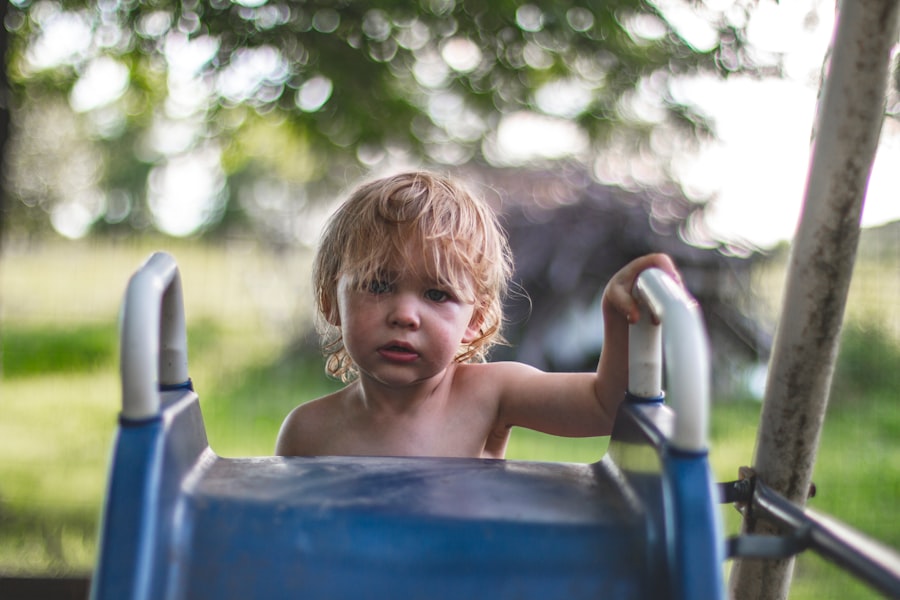Livestock ownership and management present various health risks for both animals and humans. Zoonotic diseases such as E. coli, salmonella, and brucellosis can be transmitted from animals to humans through direct contact or consumption of contaminated products.
Exposure to allergens like dust, dander, and mold in livestock environments may exacerbate respiratory conditions. Proper hygiene, sanitation, and regular veterinary care are crucial for minimizing disease transmission risks. The use of antibiotics in livestock farming contributes to the development of antibiotic-resistant bacteria, which poses a significant threat to human health.
Resistant bacterial strains can spread through direct animal contact, consumption of contaminated meat, or exposure to antibiotic residues in the environment. Responsible antibiotic use practices, developed in collaboration with veterinarians, are essential for mitigating this risk. Occupational health risks associated with livestock farming include physical injuries from animal interactions and exposure to animal waste.
Farmers and farm workers face potential dangers such as kicks, bites, or trampling from large animals. Proper training in animal handling, safety protocols, and the use of protective gear are necessary to reduce the risk of accidents and infections. By implementing appropriate health and safety measures, livestock owners can create a safer environment for themselves, their workers, and their animals while minimizing the potential negative impacts on public health.
Table of Contents
Key Takeaways
- Raising backyard chickens can pose health risks such as salmonella and avian influenza, so proper hygiene and sanitation are crucial.
- Noise and odor from backyard chickens can be a concern for neighbors, so it’s important to consider the impact on the surrounding area.
- Predators such as raccoons, foxes, and birds of prey can pose a threat to backyard chickens, so adequate protection is necessary.
- Chickens require sufficient space to roam and forage, so it’s important to provide adequate space for their well-being.
- Regular maintenance and cleaning of the coop and surrounding area is essential for the health and hygiene of the chickens and their environment.
- Zoning laws and legal restrictions may dictate whether or not you can raise chickens in your area, so it’s important to research and comply with local regulations.
- Raising backyard chickens can require a significant cost and time commitment for purchasing and maintaining the coop, feeding and caring for the chickens, and addressing any issues that may arise.
Noise and odor
Noise Nuisances
The sounds of barking dogs, crowing roosters, or lowing cattle can be disruptive to nearby residents, particularly in densely populated areas where noise ordinances may be in place. These noise disturbances can lead to conflicts between farmers and their neighbors, as well as potential legal action if local regulations regarding noise are not adhered to.
Mitigating Noise Disturbances
To minimize noise disturbances, farmers can consider implementing sound barriers such as vegetation buffers or acoustic fencing around their properties. Scheduling feeding times and other activities that may generate noise during off-peak hours can also help reduce disruptions to neighboring residents.
Managing Odors and Ensuring Compliance
Proper manure management practices such as composting, spreading, or storage in covered facilities can help reduce the impact of odors on surrounding areas. Farmers should also be mindful of wind direction and weather conditions when applying manure to fields to minimize odor drift. Additionally, livestock owners should familiarize themselves with local zoning ordinances and work with regulatory agencies to ensure compliance with these regulations. By being proactive in addressing noise and odor concerns, livestock owners can help maintain positive relationships with their neighbors and minimize the potential for legal disputes.
Predators

Livestock are vulnerable to predation by a variety of wildlife species, including coyotes, foxes, wolves, bears, and birds of prey. Predation can result in significant economic losses for livestock owners through injury or death of animals, as well as stress and reduced productivity in the herd or flock. In addition to direct predation, the presence of predators can cause behavioral changes in livestock that may impact their welfare and overall well-being.
Livestock owners must take proactive measures to protect their animals from predation while also respecting the ecological role of predators in the environment. One approach to predator management is the use of physical barriers such as fencing or netting to prevent access to livestock by potential predators. Electric fencing can be particularly effective in deterring predators such as coyotes or bears, while netting can protect poultry from aerial predators like hawks or owls.
Livestock guardian animals such as dogs, llamas, or donkeys can also be used to deter predators through their presence and protective instincts. These animals can form bonds with the herd or flock and act as an early warning system against potential threats. In some cases, lethal control methods such as trapping or hunting may be necessary to manage predator populations that pose a significant threat to livestock.
However, these methods should be used judiciously and in accordance with local regulations to minimize impacts on non-target species and maintain ecological balance. Livestock owners should also consider non-lethal deterrents such as sound devices, lights, or chemical repellents as part of an integrated approach to predator management. By implementing a combination of proactive measures and responsible predator control strategies, livestock owners can help protect their animals while also supporting healthy predator populations in their natural habitats.
Space requirements
Livestock require adequate space for grazing, exercise, and social interaction in order to maintain their health and well-being. Overcrowding can lead to increased stress, aggression, and competition for resources among animals, as well as greater risk of injury or disease transmission within the herd or flock. Providing sufficient space for livestock is essential for promoting natural behaviors and minimizing negative impacts on animal welfare.
The space requirements for livestock will vary depending on the species and breed of animal, as well as factors such as age, sex, and reproductive status. For example, dairy cows may require more space for resting and feeding than beef cattle due to their higher nutritional needs and milk production. Similarly, laying hens may need more space per bird than broiler chickens in order to exhibit natural behaviors such as dust bathing and wing stretching.
Livestock owners should familiarize themselves with industry guidelines and best practices for space requirements specific to their type of livestock in order to ensure proper management. In addition to outdoor space for grazing and exercise, livestock housing facilities should also provide adequate space for animals to move freely, lie down comfortably, and access feed and water without competition. Proper ventilation and lighting are also important considerations in housing design to promote air quality and animal comfort.
Livestock owners should regularly assess their facilities and management practices to ensure that they are meeting the space requirements necessary for the health and welfare of their animals.
Maintenance and cleaning
Livestock facilities require regular maintenance and cleaning in order to provide a healthy environment for animals and minimize the risk of disease transmission. Accumulation of manure, urine, bedding material, and feed waste can create unsanitary conditions that may lead to bacterial growth, pest infestations, and respiratory issues for both animals and humans. Proper cleaning and maintenance practices are essential for promoting good hygiene and preventing the spread of illness within the herd or flock.
Regular removal of manure from barns, pens, and pastures is important for controlling odors, reducing fly populations, and minimizing nutrient runoff into water sources. Manure management practices such as composting or spreading on fields can help recycle nutrients back into the soil while also reducing the volume of waste material on the farm. Livestock owners should also regularly clean feeding and watering equipment to prevent contamination by bacteria or mold that could impact animal health.
In addition to cleaning facilities and equipment, regular health checks and grooming practices are important for maintaining the well-being of livestock. This may include hoof trimming for cattle or sheep, shearing for wool-producing animals like sheep or alpacas, or regular parasite control measures such as deworming or vaccination. Livestock owners should work closely with veterinarians to develop a comprehensive health management plan that includes regular check-ups, vaccinations, and preventative care measures.
By implementing regular maintenance and cleaning practices on the farm, livestock owners can create a healthier environment for their animals while also minimizing potential impacts on surrounding ecosystems. Good hygiene practices are essential for promoting animal welfare and ensuring a sustainable future for livestock farming.
Zoning and legal restrictions

Livestock farming is subject to zoning regulations and legal restrictions that vary by location and may impact the type and scale of operations that are permitted in a given area. Zoning ordinances may dictate the allowable number of animals per acre, setback distances from property lines or residential areas, or specific requirements for manure management and odor control. Livestock owners should familiarize themselves with local zoning regulations in order to ensure compliance with these requirements.
In some cases, special use permits or conditional use permits may be required for certain types of livestock operations or facilities. These permits typically involve a review process by local planning or zoning boards to assess potential impacts on surrounding properties and natural resources. Livestock owners should be prepared to provide detailed plans for waste management, odor control, noise mitigation, and other factors that may be relevant to the permit review process.
Legal restrictions related to livestock farming may also include regulations regarding animal welfare standards, transportation requirements, biosecurity measures, or food safety protocols. Livestock owners should stay informed about changes in local, state, or federal regulations that may impact their operations in order to ensure compliance with these requirements. By understanding zoning regulations and legal restrictions related to livestock farming, owners can proactively address potential concerns related to land use planning, environmental protection, public health, and animal welfare.
Working within the framework of these regulations is essential for maintaining positive relationships with neighbors and regulatory agencies while also promoting responsible stewardship of natural resources.
Cost and time commitment
Owning and raising livestock involves significant costs related to purchasing animals, feed supplies, veterinary care, equipment maintenance, facility construction or maintenance, labor expenses, marketing efforts, and other operational needs. The initial investment required for starting a livestock operation can be substantial depending on the scale of production and type of animals involved. Livestock owners should carefully consider their financial resources and develop a comprehensive business plan that outlines projected expenses and potential revenue streams.
In addition to financial costs, raising livestock also requires a significant time commitment for daily care routines such as feeding, watering, cleaning facilities, monitoring animal health, administering medications or treatments as needed, managing pasture rotations or grazing schedules, handling reproductive management tasks such as breeding or birthing assistance, marketing products such as meat or dairy items if applicable, record-keeping responsibilities related to animal inventory or production data tracking. The time commitment involved in raising livestock may vary depending on factors such as herd size or species-specific needs but generally requires consistent attention throughout the year regardless of weather conditions or other external factors that may impact daily routines. Livestock owners should be prepared for long hours spent working on the farm while also being flexible enough to adapt to unexpected situations that may arise.
By carefully considering both the financial costs and time commitment involved in raising livestock before starting an operation owners can make informed decisions about their ability to manage these responsibilities effectively while also maintaining a healthy work-life balance. Developing realistic expectations about the demands of livestock farming is essential for long-term success in this industry.
If you’re considering keeping chickens, it’s important to weigh the pros and cons. While there are many benefits to having your own flock, there are also some disadvantages to consider. One related article on Poultry Wizard discusses the importance of the chicken coop interior and how it can impact the health and well-being of your birds. The article provides valuable tips and ideas for creating a comfortable and safe living space for your chickens, highlighting the importance of proper ventilation, nesting boxes, and flooring. It’s essential to consider all aspects of chicken keeping to ensure the best possible environment for your feathered friends. (source)
FAQs
What are the disadvantages of keeping chickens?
Some potential disadvantages of keeping chickens include noise, odor, and the potential for attracting pests such as rodents.
Do chickens require a lot of maintenance?
Yes, chickens require regular maintenance including feeding, cleaning their coop, and providing fresh water. They also require regular health checks and protection from predators.
Can keeping chickens be expensive?
Yes, keeping chickens can be expensive due to the initial setup costs for a coop and run, ongoing costs for feed and bedding, and potential veterinary expenses.
Are there any legal restrictions on keeping chickens?
Yes, there may be legal restrictions on keeping chickens in certain areas, such as urban or suburban neighborhoods. It’s important to check local ordinances and regulations before keeping chickens.
Do chickens pose any health risks?
Chickens can carry diseases such as salmonella, which can be transmitted to humans through contact with their feces or eggs. Proper hygiene and sanitation practices are important for reducing the risk of illness.
Do chickens require a lot of space?
Chickens require adequate space to roam and forage, as well as a secure coop for protection at night. The amount of space needed will depend on the number of chickens being kept.
Meet Walter, the feathered-friend fanatic of Florida! Nestled in the sunshine state, Walter struts through life with his feathered companions, clucking his way to happiness. With a coop that’s fancier than a five-star hotel, he’s the Don Juan of the chicken world. When he’s not teaching his hens to do the cha-cha, you’ll find him in a heated debate with his prized rooster, Sir Clucks-a-Lot. Walter’s poultry passion is no yolk; he’s the sunny-side-up guy you never knew you needed in your flock of friends!







